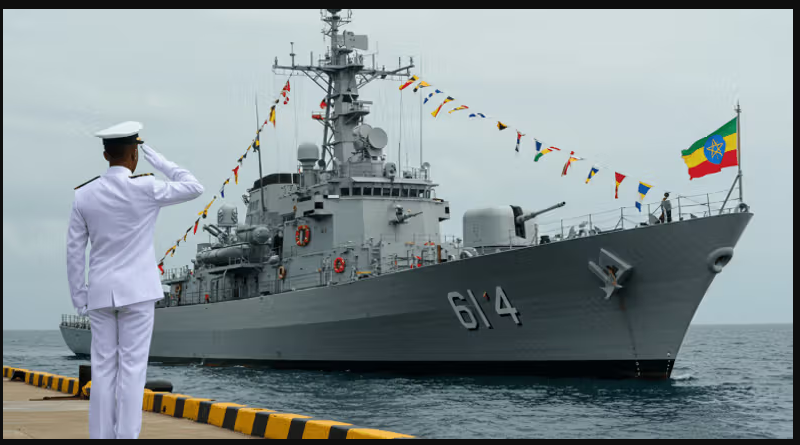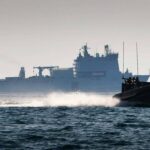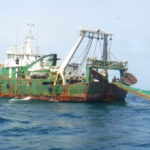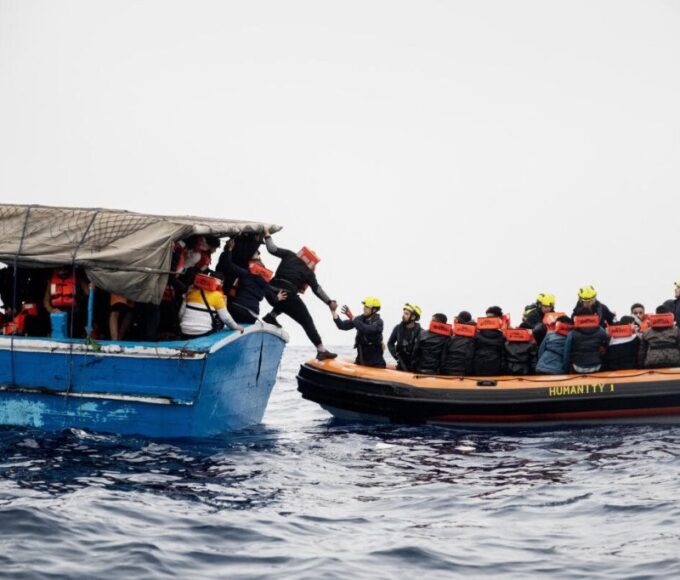Naval Logistics and Resupply: Gaps in Africa’s Blue-Water Aspirations

At independence, most African navies inherited limited coastal patrol assets from colonial powers, leaving them with insufficient industrial bases to sustain extended maritime operations. Over time, navies evolved into what analysts often refer to as green-water forces: capable of regional coastal operations but lacking the logistical backbone necessary for sustained blue-water (open-ocean) deployment.
Despite possessing relatively strong naval forces—for instance, Nigeria’s navy has vessels capable of transatlantic voyages—the absence of replenishment oilers and fleet support ships hampers real training or operational presence in the open ocean. South Africa stands as a rare exception: its replenishment ship SAS Drakensberg offers vital logistical support at sea, but such assets are scarce across the continent.
- Insufficient Replenishment Capacity
Africa’s navies generally lack the underway replenishment (UNREP) vessels—such as oilers, food and supply ships—which are essential for blue-water operations. Nigeria, despite occasional long-range deployments, does not possess fleet replenishment ships, and lacks the capacity to sustain extended training or operations away from shore.
South Africa’s SAS Drakensberg is the continent’s primary example of a replenishment vessel. Designed and built domestically, she can carry up to 5,500 tonnes of diesel fuel, 210 tonnes of fresh water, 100 tonnes of dry provisions, 30 tonnes of frozen food, and 1,000 tonnes of general cargo. She supports replenishment at sea via abeam or astern methods and even produces 50,000 liters of fresh water daily. Even so, Drakensberg remains the sole strategic asset of its kind operating in Africa.
- Operational Tempo Undermined by Maintenance and Crew Shortages
Even when surface fleets are available, naval readiness is severely curtailed by systemic maintenance challenges and crew shortages. South Africa’s Navy, historically among the strongest in sub-Saharan Africa, has seen its fleet dramatically decline. As of late 2024, only one out of 49 ships was operational; all three submarines and five patrol vessels were out of service. Prolonged maintenance delays at Armscor dockyards were identified as a chief cause.
For context, the navy’s annual target of 8,000 hours at sea during the 2023–2024 financial year was never met: only 2,641 hours were achieved—of which just 961 hours were actual deployment time. Reduced sea time is especially damaging: Vice Admiral Hlongwane had warned that if annual sea hours dip below 10,000, “the SA Navy will decline rapidly,” with severe consequences for training, safety, and naval standards.
- Limited Logistics Infrastructure and Multi-Modal Constraints
In West Africa, logistical chains depend heavily on land-based storage and transport. In Nigeria, naval logistics is centralized: supplies flow through bases in Lagos, Calabar, Port Harcourt, and Warri. These serve as hubs with bonded and cold storage—but challenges remain: port congestion, customs delays, terrain difficulties, security risks in transit (especially riverine routes), and limited availability of specialized technical parts.
Such constraints mean that even if a vessel is fit to deploy, sustained operations—especially offshore—are hampered by weak supply chains.
- Regional Cooperation Initiatives and Persistent Gaps
There are collaborative initiatives aimed at addressing these logistical gaps. The U.S.-led Africa Partnership Station (APS) provides training, port visits, and capacity building to improve maritime safety and security. It strengthens cooperation through joint exercises and enhances participants’ ability to operate and support naval or coast guard missions.
However, APS is not a substitute for organic logistics infrastructure—it doesn’t deliver replenishment vessels or overhaul maritime supply chains. Similarly, reliance on external naval powers for high-end maintenance and support—as documented in strategic critiques—reflects the continent’s ongoing dependency.
Africa’s dream of projecting naval power far from its shores hinges not on the ships themselves—but on the invisible lifeline that supplies them. Without a logistics network robust enough to support sustained, independent blue-water operations, Africa’s navies remain tethered to their harbors. The question that remains: can African nations build a logistics backbone worthy of true maritime autonomy?
King Richard Igimoh, Group Editor ALO
King Richard Igimoh, Group Editor African Leadership Organisation is an award-winning journalist, editor, and publisher with over two decades of expertise in political, defence, and international affairs reporting. As Group Editor of the African Leadership Organisation—publishers of African Leadership Magazine, African Defence & Security Magazine, and Africa Projects Magazine—he delivers incisive coverage that amplifies Africa’s voice in global security, policy, and leadership discourse. He provides frontline editorial coverage of high-profile international events, including the ALM Persons of the Year, the African Summit, and the African Business and Leadership Awards (ABLA) in London, as well as the International Forum for African and Caribbean Leadership (IFAL) in New York City during the United Nations General Assembly.
Recent Posts
Categories
- Air & Aerospace15
- Border Security14
- Civil Security3
- Civil Wars4
- Crisis4
- Cyber Security4
- Defense15
- Diplomacy17
- Entrepreneurship1
- Events5
- Global Security Watch6
- Industry6
- Land & Army7
- Leadership & Training3
- Military Aviation2
- Military History27
- Military Speeches1
- Naval & Maritime8
- Resources1
- Security12
- Special Forces1
- Systems And Technology8
- Tech6
- Uncategorized3
- UNSC1
- Veterans6
- Women in Defence9
Related Articles
NAVAL FORCES EMERGE AS LIFELINES IN GLOBAL HUMANITARIAN RESCUE MISSIONS
Modern navies are increasingly defined not only by their combat power but...
ByKing Richard Igimoh, Group Editor ALONovember 20, 2025THE STRATEGIC IMPORTANCE OF DJIBOUTI’S PORTS
Djibouti, a small nation located on the Horn of Africa, commands an...
ByKing Richard Igimoh, Group Editor ALOOctober 21, 2025SUBMARINE PROGRAMMES IN AFRICA: PRESTIGE OR NECESSITY?
Africa’s naval power has long rested on surface vessels, yet the rise...
ByKing Richard Igimoh, Group Editor ALOSeptember 23, 2025AFRICA’S GROWING NAVAL AMBITIONS: WHO LEADS THE PACK?
Africa’s coastlines support millions of families on the continent. From a thriving...
ByKing Richard Igimoh, Group Editor ALOSeptember 15, 2025














